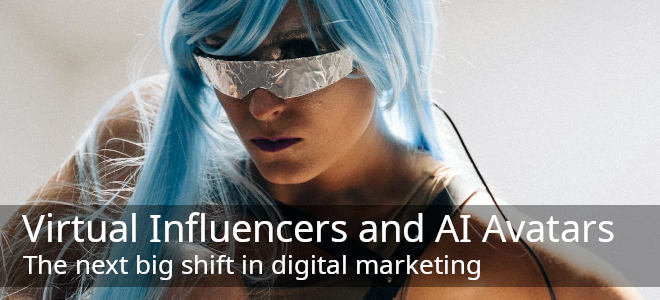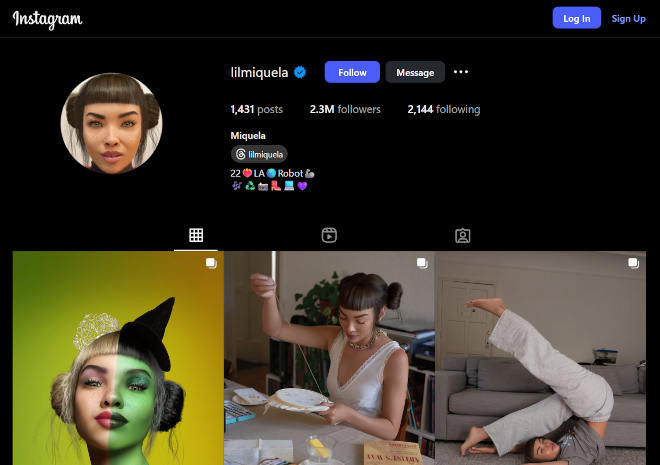Brands no longer have to be embodied by living representatives and logos. More and more businesses are using virtual influencers and AI-generated avatars, entirely digital characters, animated with 3D design and generative AI, to talk to their audiences, set stories, and provide them with personally relevant experiences at scale.
What began as a freshly minted new experiment (a CGI model posting to social channels) has now evolved into a quantifiable channel with campaigns, commerce integrations, and advanced tooling that enables real-time interaction.
Virtual Influencer is an industry that is expanding at an alarming rate. Market projections that the industry will be worth between the low single-digits in billions of dollars in 2024 and increase significantly (in year-over-year terms) through 2025.
Why They Matter Now
Three technological and cultural changes converge to enable virtual talent to work in the current times. To begin with, the cost and time of generating realistic characters and content is significantly lowered with the help of generative AI (text, image, audio, and video).
Second, voice-to-face and real-time animation allow avatars to respond in real-time–enhancing authenticity and utility relative to post-rendered posts.
Third, viewers (and young Millennials in particular) are becoming more willing to accept digital personalities as content creators, members of the community, and even tastemakers. Combining these trends allows the brands to roll out personalities that they have full-time control over, with 24/7 accessibility, exact messaging, and a narrow creative alignment, and remain human enough to make the engagement happen.
Real Examples And Brand Use
The Virtual Influencers and AI Avatars like Lil Miquela, Imma, Shudu and Lu of Magalu are examples that are utilizing various approaches- haute couture narration, retailing, and proximity to stores.
Large brands in fashion, luxury and consumer tech have already collaborated with virtual creators or developed branded avatars to run campaigns and this has demonstrated that the model can drive awareness and new faces of creating. Research in the industry and case studies reveal that companies such as Prada, Cartier, Disney, Puma, Nike and Tiffany have used digital personas in promotional activities.
What They Deliver For Marketers
Scalability & Control
Avatars are capable of generating huge quantities of on-brand content, work within a content calendar without the need to schedule with scheduling headaches, and can be localized in markets at a very low incremental cost. minimal incremental cost.
Personalization At Scale
AI avatars can power personalized conversational experiences—guiding shoppers, answering product questions, or hosting live sessions—while keeping brand voice and compliance baked in.
Data & Measurement
Since brands have the end-to-end experience, they can instrument interactions to create analytics and test creative approaches rapidly.
Creative Differentiation
The established IP of a well-developed virtual personality can be a needle in the hay when channeled up against noise.
Best Ways To Use Them (Practical Playbook)
Launch Limited Series Storytelling
Use an avatar to tell a serialized brand story on Reels or TikTok—combining episodic content with shoppable moments.
Customer Experience Avatars
Deploy conversational avatars on sites or in apps to guide purchase flows, upsell, or troubleshoot—improving conversion while reducing live agent load.
Co-Creation & UGC Prompts
Let real creators “collaborate” with your avatar (duets, remixes), amplifying reach and generating authentic user content.
Event Hosts & Spokescharacters
Use avatars to MC virtual events, launch products, or host live Q&As—maintaining consistent availability across time zones.
[Recommended reading:10 Best AI Tools For Social Media Marketing]
Measuring Success
Awareness (impressions, reach), engagement (likes, shares, comments), and conversion (CTR, add-to-cart, purchases). To measure brand lift and sentiment, i.e., are audiences buying into the character, long-term ROI. One of the main benefits: because of closed systems and owned experiences, it is possible to do A/B testing of personality traits, scripts, and dialog flows more effectively than in cases with human influencers.
Risks And Ethical Guardrails
Virtual talent brings unique ethical and legal considerations:
Transparency
Audiences expect disclosure when they interact with non-human creators. Clear labeling avoids deceptive advertising and protects trust. Research shows transparency is valued by audiences and can affect perceived effectiveness.
Cultural sensitivity & representation
Designing avatars that reference cultures, histories, or identities requires deep, genuine research—missteps can create backlash.
Deepfake & misuse risk
The same tech that powers avatars can be misused; brands must control assets, manage rights, and implement guardrails for content repurposing.
Regulatory environment
Copyright, publicity rights, and ad disclosure rules vary by market; compliance is essential when avatars mimic real people or promote regulated products.
Technology Stack (What To Choose)
An industrial stack will combine creative tooling (3D modelling, motion capture, design), generative models (text, image, audio), and delivery platforms (social, web widgets, in-app SDKs). It is now much simpler to achieve realistic lip-syncing and emotion mapping with recent open-source and commercial tools, such as Nvidia facial animation technology and cloud-based avatar engines, reducing development timescales to establish a real-time interaction. Latency, scalability and data governance, as well as the possibility to export or re-use the IP, are some of the factors to consider when choosing vendors.
Where ROI Shows Up (And Where To Be Cautious)
ROI usually comes at the first touch of awareness and PR (a fresh avatar will be able to win the free media), then it will come at the second touch of engagement (higher time-on-content) and, when incorporated into commerce, in actual sales. Caution: avatars cannot solve performance issues; in other words, inappropriate creative, lack of a suitable channel fit, or neglecting the disclosure norms may cancel the positive effects.
Future Outlook
Look to the Virtual Influencers and AI Avatars moving beyond mere social toys into essential marketing platforms. AI assistants that inhabit websites and within applications, motivating personal experiences; ambivalent campaigns involving both human and computerized talent; and avatar IP that spans into metaverse experiences, games, and even real-life experiential marketing.
It is projected that the market will increase by a high single-digit CAGR in the coming decade with the continued improvement of tooling, standards, and consumer comfort.
Final Take
Marketers have a new dimension of creative manipulation and customization with virtual influencers and AI avatars. Their strength is particularly great when they are not gimmicks taken as such, but rather planned brand resources: purposely designed with transparency and measurement.
Digital personas can act as memorable narrators, trusted customer points of contact, and profitable scales to those brands that are prepared to invest in craft and governance. The magic will be in striking a balance between new and authenticity: the avatar must be perceived as of unique value as opposed to being another automated mouthpiece.
[Recommended reading:Digital Marketing In 2025 With Social Media]
[Image credits – Main Photo by Anna Tarazevich; other images or screen prints are from their respective websites and/or social platforms or articles]
Catherine Gracia is a digital content strategist and tech writer at Pixel Glume, where she explores the intersection of emerging technologies and brand innovation. With a keen focus on mobile apps, web design and digital transformation, she helps businesses understand and adapt to the evolving digital landscape.



